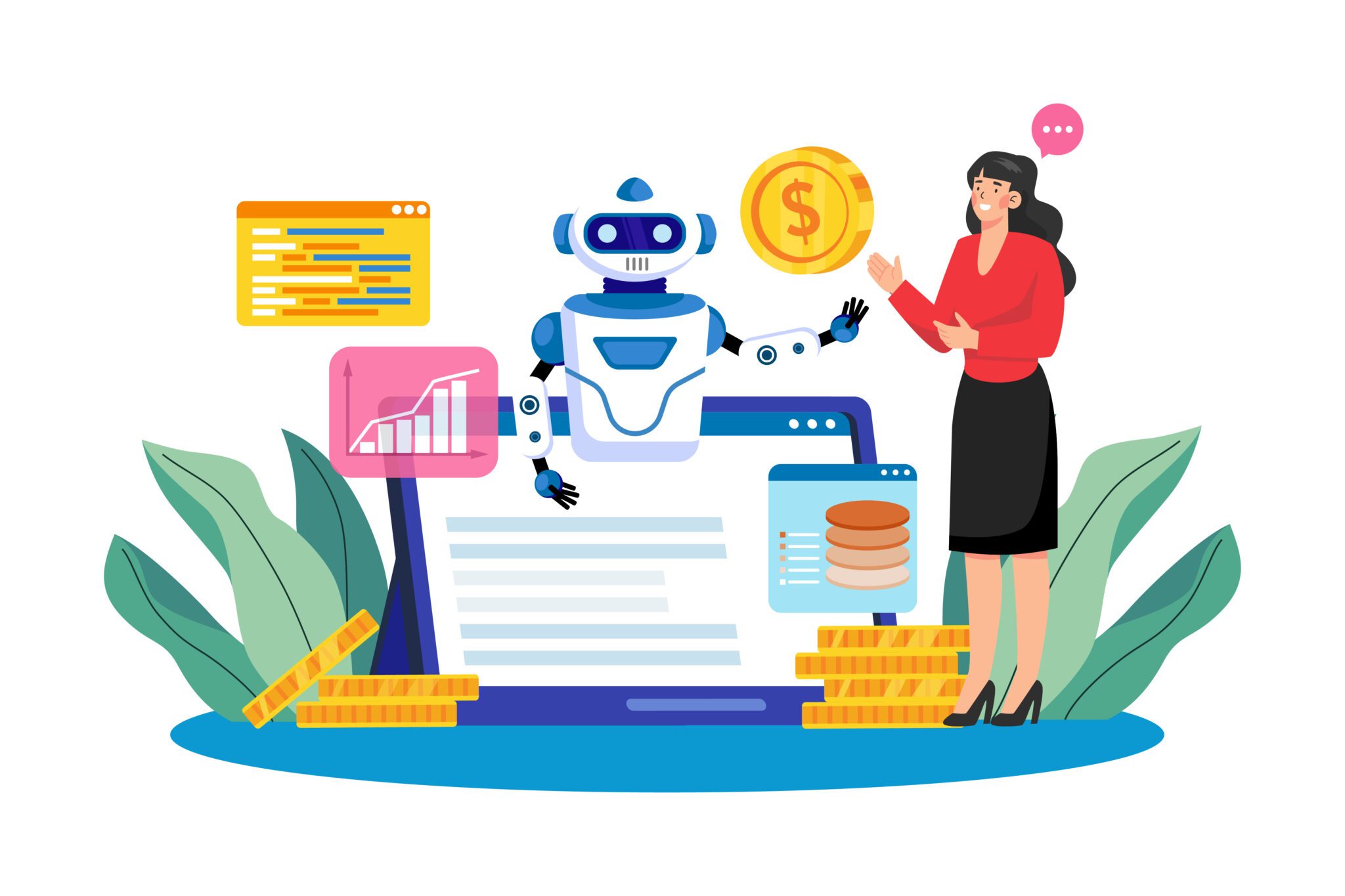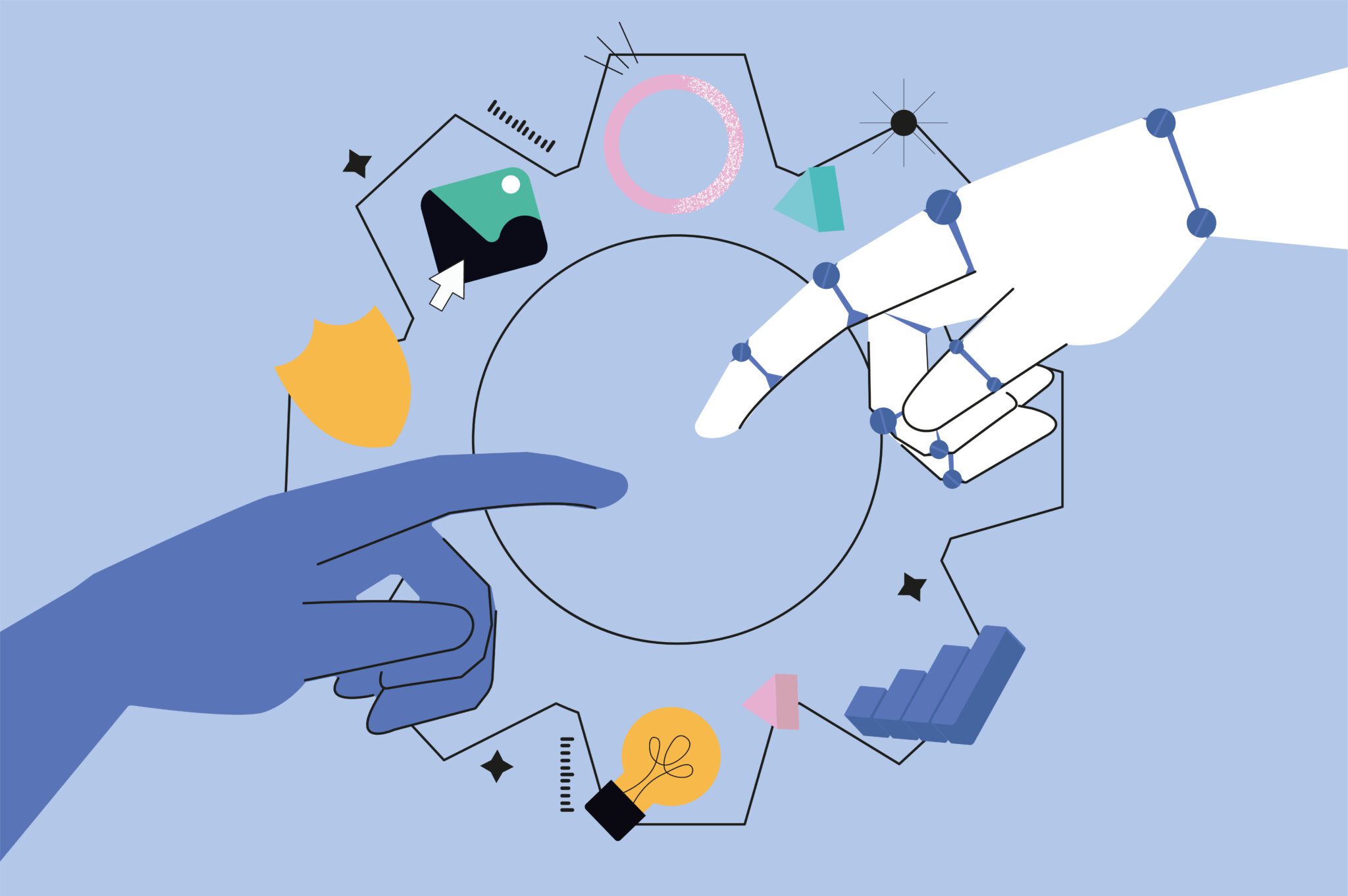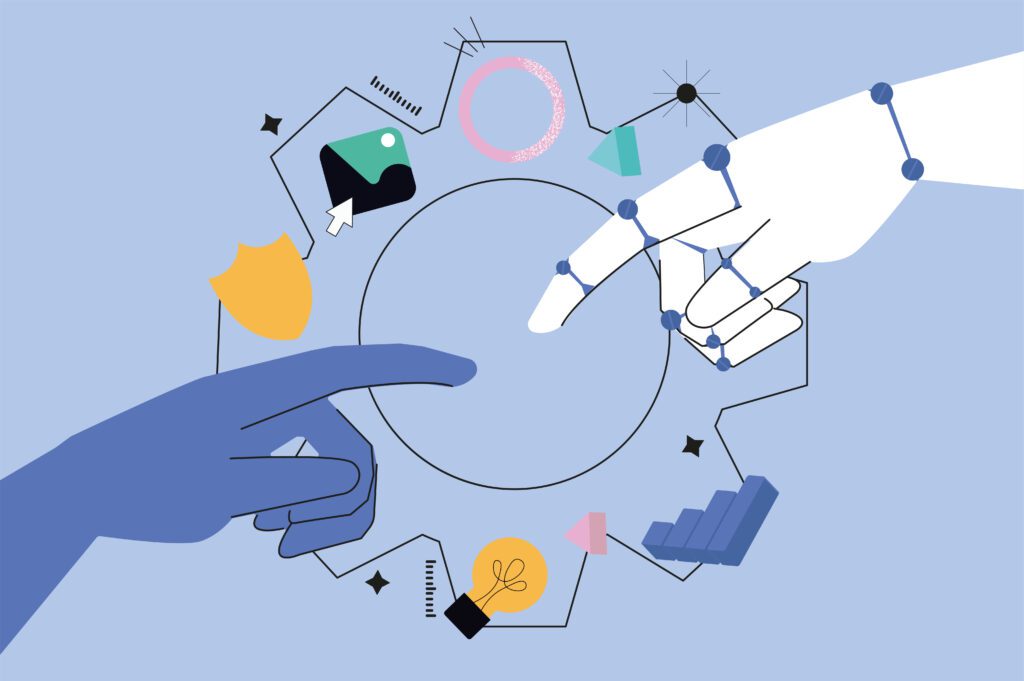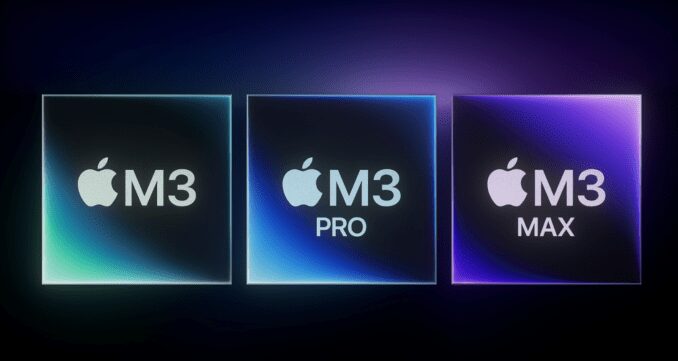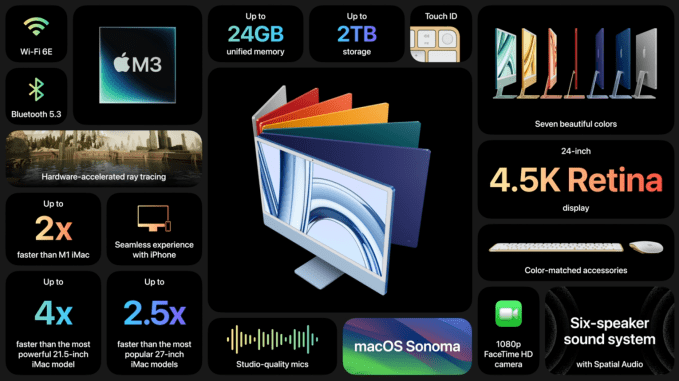The frenzy surrounding the launch of Large Language Models (LLMs) and other types of Generative AI (GenAI) isn’t going to fade anytime soon. Users of GenAI are discovering and recommending new and interesting use cases for their business and personal lives. Many recommendations start with the assumption that GenAI requires a human prompt. Indeed, Time magazine recently proclaimed “prompt engineering” to be the next hot job, with salaries reaching $335,000. Tech forums and educational websites are focusing on prompt engineering, with Udemy already offering a course on the topic, and several organizations we work with are now beginning to invest considerable resources in training employees on how best to use ChatGPT.
However, it may be worth pausing to consider other ways of interacting with GPT technologies, which are likely to emerge soon. We present an intuitive way to think about this issue, which is based on our own survey of GenAI developments, combined with conversations with companies that are seeking to develop some versions of these.
A Framework of GPT Interactions
A good starting point is to distinguish between who is involved in the interaction — individuals, groups of people, or another machine — and who starts the interaction, human or machine. This leads to six different types of GenAI uses, shown below. ChatGPT, where one human initiates interaction with the machine is already well-known. We now describe each of the other GPTs and outline their potential.
CoachGPT is a personal assistant that provides you with a set of suggestions on managing your daily life. It would base these suggestions not on explicit prompts from you, but on the basis of observing what you do and your environment. For example, it could observe you as an executive and note that you find it hard to build trust in your team; it could then recommend precise actions to overcome this blind spot. It could also come up with personalized advice on development options or even salary negotiations.
CoachGPT would subsequently see which recommendations you adopted or didn’t adopt, and which benefited you and which ones didn’t to improve its advice over time. With time, you would get a highly personalized AI advisor, coach, or consultant.
Organizations could adopt CoachGPT to advise customers on how to use a product, whether a construction company offering CoachGPT to advise end users on how best to use its equipment, or an accounting firm proffering real-time advice on how best to account for a set of transactions.
To make CoachGPT effective, individuals and organizations would have to allow it to work in the background, monitoring online and offline activities. Clearly, serious privacy considerations need to be addressed before we entrust our innermost thoughts to the system. However, the potential for positive outcomes in both private and professional lives is immense.
GroupGPT would be a bona fide group member that can observe interactions between group members and contribute to the discussion. For example, it could conduct fact checking, supply a summary of the conversation, suggest what to discuss next, play the role of devil’s advocate, provide a competitor perspective, stress-test the ideas, or even propose a creative solution to the problem at hand.
The requests could come from individual group members or from the team’s boss, who need not participate in team interactions, but merely seeks to manage, motivate, and evaluate group members. The contribution could be delivered to the whole group or to specific individuals, with adjustments for that person’s role, skill, or personality.
The privacy concerns mentioned above also apply to GroupGPT, but, if addressed, organizations could take advantage of GroupGPT by using it for project management, especially on long and complicated projects involving relatively large teams across different departments or regions. Since GroupGPT would overcome human limitations on information storage and processing capacity, it would be ideal for supporting complex and dispersed teams.
BossGPT takes an active role in advising a group of people on what they could or should do, without being prompted. It could provide individual recommendations to group members, but its real value emerges when it begins to coordinate the work of group members, telling them as a group who should do what to maximize team output. BossGPT could also step in to offer individual coaching and further recommendations as the project and team dynamics evolve.
The algorithms necessary for BossGPT to work would be much more complicated as they would have to consider somewhat unpredictable individual and group reactions to instructions from a machine, but it could have a wide range of uses. For example: an executive changing job could request a copy of her reactions to her first organization’s BossGPT instructions, which could then be used to assess how she would fit into the new organization — and the new organization-specific BossGPT.
At the organizational level companies could deploy BossGPT to manage people, thereby augmenting — or potentially even replacing — existing managers. Similarly, BossGPT has tremendous applications in coordinating work across organizations and managing complex supply chains or multiple suppliers.
Companies could turn BossGPT into a product, offering their customers AI solutions to help them manage their business. These solutions could be natural extensions of the CoachGPT examples described earlier. For example, a company selling construction equipment could offer BossGPT to coordinate many end users on a construction site, and an accounting firm could provide it to coordinate the work of many employees of its customers to run the accounting function in the most efficient way.
AutoGPT entails a human giving a request or prompt to one machine, which in turn engages other machines to complete the task. In its simplest form, a human might instruct a machine to complete a task, but the machine realizes that it lacks a specific software to execute it, so it would search for the missing software on Google before downloading and installing it, and then using it to finish the request.
In a more complicated version, humans could give AutoGPT a goal (such as creating the best viral YouTube video) and instruct it to interact with another GenAI to iteratively come up with the best ChatGPT prompt to achieve the goal. The machine would then launch the process by proposing a prompt to another machine, then evaluate the outcome, and adjust the prompt to get closer and closer to the final goal.
In the most complicated version, AutoGPT could draw on functionalities of the other GPTs described above. For example, a team leader could task a machine with maximizing both the effectiveness and job satisfaction of her team members. AutoGPT could then switch between coaching individuals through CoachGPT, providing them with suggestions for smoother team interactions through GroupGPT, while at the same time issuing specific instructions on what needs to be done through BossGPT. AutoGPT could subsequently collect feedback from each activity and adjust all the other activities to reach the given goal.
Unlike the above versions, which are still to be created, a version of AutoGPT has been developed and was rolled out in April 2023, and it’s quickly gaining broad acceptance. The technology is still not perfect and requires improvements, but it is already evident that AutoGPT is able to complete a set of jobs that requires the completion of several tasks one after the other.
We see its biggest applications in complex tasks, such as supply chain coordination, but also in fields such as cybersecurity. For example, organizations could prompt AutoGPT to continually address any cybersecurity vulnerabilities, which would entail looking for them — which already happens — but then instead of simply flagging them, AutoGPT would search for solutions to the threats or write its own patches to counter them. A human might still be in the loop, but since the system is self-generative within these limits, we believe that AutoGPT’s response is likely to be faster and more efficient.
ImperialGPT is the most abstract GenAI — and perhaps the most transformational — in which two or more machines would interact with each other, direct each other, and ultimately direct humans to engage in a course of action. This type of GPT worries most AI analysts, who fear losing control of AI and AI “going rogue.” We concur with these concerns, particularly if — as now — there are no strict guardrails on what AI is allowed to do.
At the same time, if ImperialGPT is allowed to come up with ideas and share them with humans, but its ability to act on the ideas is restricted, we believe that this could generate extremely interesting creative solutions especially for “unknown unknowns,” where human knowledge and creativity fall short. They could then easily envision and game out multiple black swan events and worst-case scenarios, complete with potential costs and outcomes, to provide possible solutions.
Given the potential dangers of ImperialGPT, and the need for tight regulation, we believe that ImperialGPT will be slow to take off, at least commercially. We do anticipate, however, that governments, intelligence services, and the military will be interested in deploying ImperialGPT under strictly controlled conditions.
Implications for your Business
So, what does our framework mean for companies and organizations around the world? First and foremost, we encourage you to step back and see the recent advances in ChatGPT as merely the first application of new AI technologies. Second, we urge you to think about the various applications outlined here and use our framework to develop applications for your own company or organization. In the process, we are sure you will discover new types of GPTs that we have not mentioned. Third, we suggest you classify these different GPTs in terms of potential value to your business, and the cost of developing them.
We believe that applications that begin with a single human initiating or participating in the interaction (GroupGPT, CoachGPT) will probably be the easiest to build and should generate substantial business value, making them the perfect initial candidates. In contrast, applications with interactions involving multiple entities or those initiated by machines (AutoGPT, BossGPT, and ImperialGPT) may be harder to implement, with trickier ethical and legal implications.
You might also want to start thinking about the complex ethical, legal, and regulatory concerns that will arise with each GPT type. Failure to do so exposes you and your company to both legal liabilities and — perhaps more importantly — an unintended negative effect on humanity.
Our next set of recommendations depends on your company type. A tech company or startup, or one that has ample resources to invest in these technologies, should start working on developing one or more of the GPTs discussed above. This is clearly a high-risk, high-reward strategy.
In contrast, if your competitive strength is not in GenAI or if you lack resources, you might be better off adopting a “wait and see” approach. This means you will be slow to adopt the current technology, but you will not waste valuable resources on what may turn out to be only an interim version of a product. Instead, you can begin preparing your internal systems to better capture and store data as well as readying your organization to embrace these new GPTs, in terms of both work processes and culture.
The launch and rapid adoption of GenAIs is rightly being considered as the next level in the evolution of AI and a potentially epochal moment for humanity in general. Although GenAIs represent breakthroughs in solving fundamental engineering and computer science problems, they do not automatically guarantee value creation for all organizations. Rather, smart companies will need to invest in modifying and adapting the core technology before figuring out the best way to monetize the innovations. Firms that do this right may indeed strike it rich in the GenAI goldrush.

 News4 days ago
News4 days ago
 News6 days ago
News6 days ago
 News3 days ago
News3 days ago
 News3 days ago
News3 days ago
 News4 days ago
News4 days ago
 News4 days ago
News4 days ago
 News4 days ago
News4 days ago


